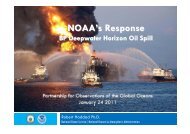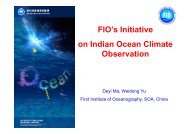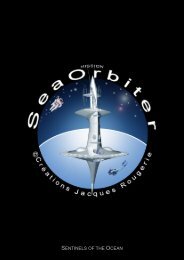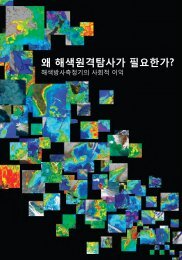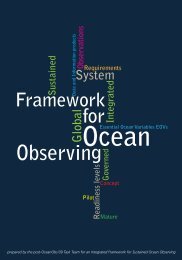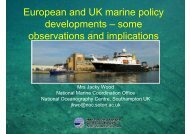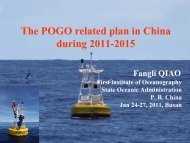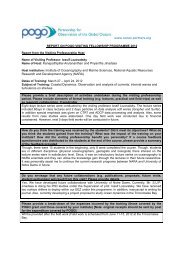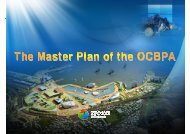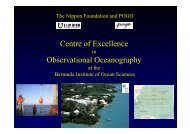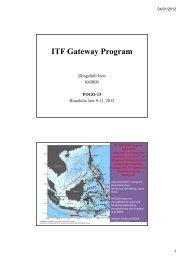NF-POGO Centre of Excellence Year 2 Report
NF-POGO Centre of Excellence Year 2 Report
NF-POGO Centre of Excellence Year 2 Report
- No tags were found...
Create successful ePaper yourself
Turn your PDF publications into a flip-book with our unique Google optimized e-Paper software.
Specific Training Objectives Included:capacity building in the host institution, leading to enhanced sustained ocean observations thataddress societal issues <strong>of</strong> the day.development <strong>of</strong> highly-trained scientific pr<strong>of</strong>essionalspromoting contacts, collaborations and networking among institutions <strong>of</strong> developing anddeveloping countriesAnother goal <strong>of</strong> the Training Programme is to recruit students into the 10 month <strong>Centre</strong> <strong>of</strong> <strong>Excellence</strong>Programme in Bermuda.The Programme was made available to 25 participants from five Latin America countries, includingfour from Argentina, 15 from Brazil including two from INPE and four from IEAPM, one fromEcuador, three from Mexico and two from Venezuela. Student applications were evaluated based onacademic credentials, prior work (e.g., motivation) and letters <strong>of</strong> recommendation. Travel andsubsistence costs were defrayed for the trainees. The workshop was aimed at doctoral students andyoung researchers with interests in quantitative analyzes <strong>of</strong> biological data from the marineenvironment, remote sensing and physical-biological interactions. Trainee names and home institutionsare provided in Appendix 1 (page 6).3. Training ActivitiesThe course format included lectures on theoretical fundamentals complemented by practicaldemonstrations, data collection, group work, and a sampling opportunity aboard the research vessel,R/V Diadorim. The specific topics for discussion and practicals included the rational and methods fordetermination <strong>of</strong> phytoplankton community composition and structure and the relationship <strong>of</strong>phytoplankton to optical data derived from satellites. Data interpretation was stressed, both in terms <strong>of</strong>both regional and global issues. Selected photographs <strong>of</strong> the trainees during various stages <strong>of</strong> theprogramme are provided in Appendix 6 (page 17).Laboratory practicals included identification (taxonomy) and characterization <strong>of</strong> well-known andcharacterized algal cultures as well as algae collected from waters adjacent to the lab using both lightand epifluorescence microscopy. Pigments were qualitatively and quantitatively determined via HPLCfor most <strong>of</strong> the same algal cultures. Spectral properties for algae cultures were determined with aspectrophotometer. Other projects/demonstrations for the trainees involved use <strong>of</strong> methods andprotocols related to downloading and analyzing satellite ocean data. S<strong>of</strong>tware programs such asSeaDAS and WIM were emphasized. The schedule <strong>of</strong> activities is provided in Appendix 4 (page 12).For independent research projects, the trainees were divided into three teams. Samples analyzed werecollected aboard the R/V Diadorim. Briefly, two stations were sampled, one in the Bay and one further<strong>of</strong>fshore. CTD data were collected from each station along with Secchi disk readings and net tows.Water was sampled from three depths at each station via Niskin bottles.Once shipboard samples and data were returned to the lab, trainees were challenged to make determinealgal taxonomy via light and epifluorescence microscopy. Pigments were quantitatively andqualitatively examined via HPLC. Quantitative aspects <strong>of</strong> phytoplankton abundance were analyzed viaUtermohl chambers. Spectral properties <strong>of</strong> algae were determined via spectrophotometry. Traineesdownloaded satellite images <strong>of</strong> the region and used the data to interpret the field data.4



